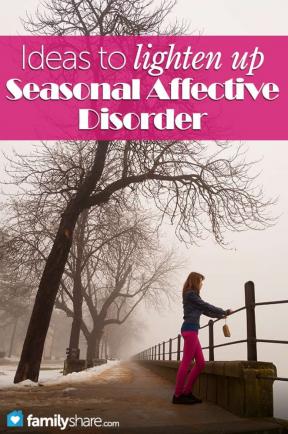
I've spent winters in some of the colder parts of the US, including Massachusetts, Michigan, Washington and Oregon. Every year, as the days get shorter and darker, I start to notice a change in my mood. Seasonal Affective Disorder (SAD) is real, and I have experienced it. Defined by WebMD as a type of depression that affects people at the same time each year, SAD makes me want to crawl under the covers and hibernate until spring. Since that's not an option, I've learned to deal with my minor symptoms and have sympathy for those who deal with this disorder.
If you struggle with feelings of depression and lack of energy and motivation during the winter months, or less commonly during early spring, you, too, may suffer from SAD. Fortunately, there are a number of successful therapies, and many people can function normally with treatment. If SAD is bothering you or someone you love, there are several things you can do to be happier.
Recognize symptoms
SAD symptoms are similar to other depression symptoms, like feelings of hopelessness, increased desire to sleep, irritability and social withdrawal. SAD affects more women than men, and younger women are more likely to have SAD than older. It is also affects people who live in Northern climates, where winters are longer.
See a doctor
If you think you might have SAD, see your doctor. There are no tests to diagnose SAD, but a doctor can help you choose appropriate treatment and lifestyle changes. A diagnosis will help you realize you are not at fault for your feelings and may also shorten your suffering. It's hard to function and take care of all your needs, let alone other's, when you feel depressed and lethargic.
Be prepared
Once you realize you have SAD, it may return yearly as fall approaches. You can reduce or eliminate symptoms completely by starting treatment early. If your doctor advises an anti-depressant, begin taking it as prescribed. There has been some evidence that increasing Vitamin-D may also bring relief. I know that I will feel a little down when the rainy season begins, and the sun disappears. Prepping myself physically and mentally helps.
Try light therapy
When I lived in Michigan, and the winters seemed to last 6 months, occasional therapy with a light box really helped. Light therapy is also called phototherapy or heliotherapy. It reduces SAD symptoms by mimicking outdoor light thus allowing your body to reap the benefits of sunlight indoors even if there is no sun outdoors. There are several kinds of light boxes available so do your research, ask your doctor and always use the light as directed. There can be side effects from using light boxes improperly.
Lifestyle changes
There are several simple things you can do to help your body combat Seasonal Affective Disorder. Eating healthy foods like vegetables and lean proteins instead of heavy carbohydrates will help. When the sun does shine, try to get outside and absorb natural Vitamin D. Continue to exercise and try to sleep regularly. Positive self-talk and behavioral therapy is also helpful. I know to pop outside on sunny days and soak up some rays. The fresh air combined with sunlight really does help.
Spring will come
For most people, the end of cold and dark days also means the end of SAD symptoms. There is hope! If you suffer from SAD, be gentle with yourself and ask for help when needed. If someone you love is affected, offer words of encouragement and understanding. SAD doesn't have to keep you down. Instead, find ways to combat the cold and enjoy winter. Remember, spring will come and the sun will shine, again.

